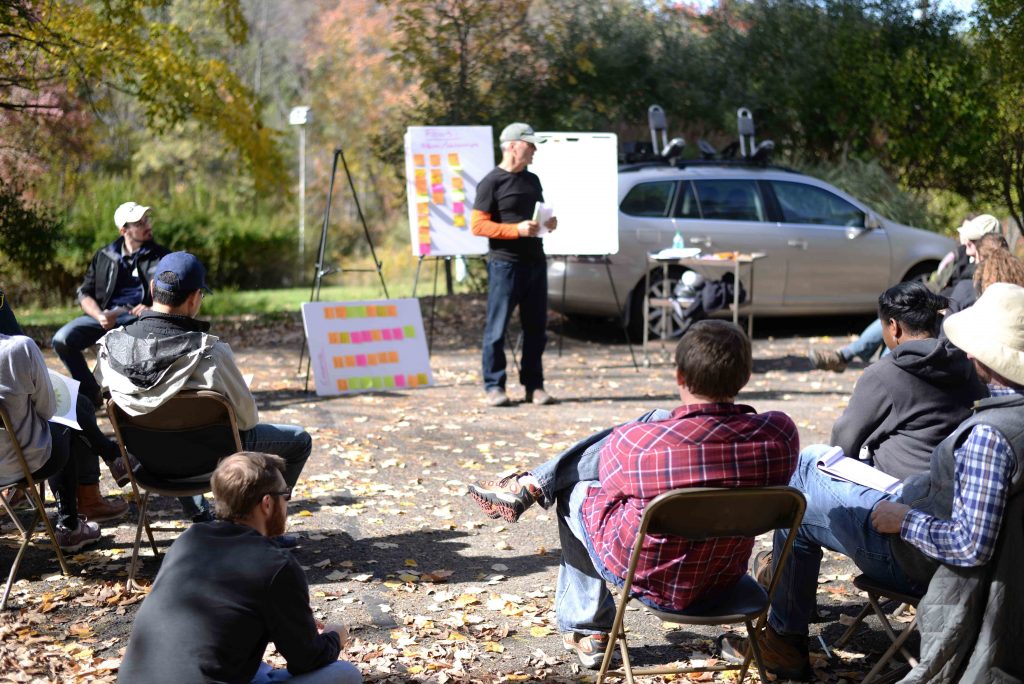
An open house was held at the Nuthatch Hollow Nature Preserve on Oct. 15 to begin the planning process for the Living Building Project, a reconstruction of the current structure on the site into a completely green building.
The Nuthatch Hollow site is located roughly a mile from campus, along Bunn Hill Road. It consists of 80 acres of woodland that support a large variety of birds, salamanders and other animals.
The site has long been used for field research and naturalist observation. Originally, prominent local businessman and community member Robert Schumann owned the site. Eventually Schumann formed an informal Nuthatch Hollow Committee with Binghamton University environmental studies faculty and opened it to students and faculty for field research.
When Schumann passed away in 2011, he left Nuthatch Hollow to the environmental studies department at BU on the condition that the site would be used as an outdoor research and environmental lab, according to Richard Andrus, a professor of environmental studies. Research and fieldwork labs from the environmental studies department and classes relating to the surrounding environment plan to occupy the space.
“I think that [Schumann] wanted the oversight of the property left to people on the committee that he knew and trusted,” Andrus said. “The idea was to build a fieldwork teaching lab, but then we found out about the Living Building Challenge. The discussion now is how we foster a living building while keeping the original intent of the building.”
The Living Building Challenge, created by the nonprofit International Living Future Institute, is a sustainable building certification program that imposes strict standards to create structures that provide positive benefits to the environment. Currently, there are only 11 certified living buildings worldwide.
One requirement for creating a living building is that it must have net positive energy generation, meaning the building outputs more renewable energy than it uses. Other standards include cleaning any water that the building uses and returning it to the environment, and that it is constructed out of only eco-friendly materials. Ziang Zhang, an assistant professor in the electrical and computer engineering department, said that creating a green power system to do this is complicated.
“Once you put renewable energy in a system, the problem is that it is unreliable,” Zhang said. “We can’t control when the sun shines or when the wind blows.”
Pamela Mischen, the sustainable communities steering committee chair and a BU public administration professor, said that the project’s requirements have led it to become a collaborative effort between various disciplines, including engineering, environmental studies, sustainable communities and public administration. Part of the funding for the project is coming from the smart energy and sustainable communities Transdisciplinary Area of Excellence.
“The project has led to a crossover between the academic side of the University and the operation side of the University,” Mischen said.
Currently, planning for the building is still underway. It will be designed by Ashley McGraw Architects, a firm based in Syracuse, NY. Nicole Schuster, an architect at Ashley McGraw, said that the firm was in the process of gathering information and ideas from those familiar with the site.
“We are just getting started on the design process,” Schuster said. “We’re getting to know the site based on talking to people who have intimate knowledge of the place.”
Construction on the site is expected to begin in the spring 2018, and should be completed by 2019. The site must be occupied for a full year prior to receiving certification, and is anticipated to become a certified living building in 2020.


